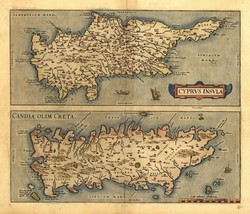Cyprus and Crete as insular spaces
The Mediterranean Sea is a social, economic and cultural entity that is important for scientific inquiry as well as the study of a historical pathway. It is therefore important to study insularity in the field of Mediterranean studies. More specifically, it is necessary to distinguish the meanings of insularity as it refers to space and the size of the islands as influences on their productive capabilities and economic structures. An EU-funded project, MEDINS(opens in new window) (Mediterranean insularities and ‘miniature continents’: Space, landscape and agriculture in early modern Cyprus and Crete), suggested Cyprus and Crete as models to create a typology of insular space. MEDINS studied the agricultural landscape and cultivation of both islands based on the analysis of taxation and land registers from the time of the Ottoman Empire. The project collected and processed data with the help of digital mapping tools, cartographic databases and geographic information systems. This enabled study of the landscape of the two islands and the movement, contraction or production of various crops over time. Study of the siyakat script of Ottoman Turkish enabled the processing of the primary sources such as Ottoman fiscal surveys. Aiming to situate Cyprus and Crete within the broader theoretical and conceptual framework of Mediterranean insularities, MEDINS focused on dissemination. This took place through the authoring and publication of an article as well as organising an international conference on the issue of insularity and presenting at various conferences. Since one of the main aims was also to broaden dissemination beyond academic audiences, the study publicised activities in newspapers as well as through television interviews, public lectures and events on the islands of Cyprus and Crete. Additionally, educational activities targeted schools and teachers, thus creating a socioeconomic impact and greater societal implications. Besides visiting schools, MEDINS also held a training workshop for middle and high school teachers in Cyprus. The educational activities created can be implemented in classrooms and are available on the project website. Completed MEDINS results further include one peer-reviewed paper (and one forthcoming); an edited collection of essays to be published as both the special issue of a journal; presentations at international conferences; and an exhibition based on the project and that was part of the ‘Terra Mediterranea’ series of events at the Nicosia Municipal Arts Centre (April-November 2017).







